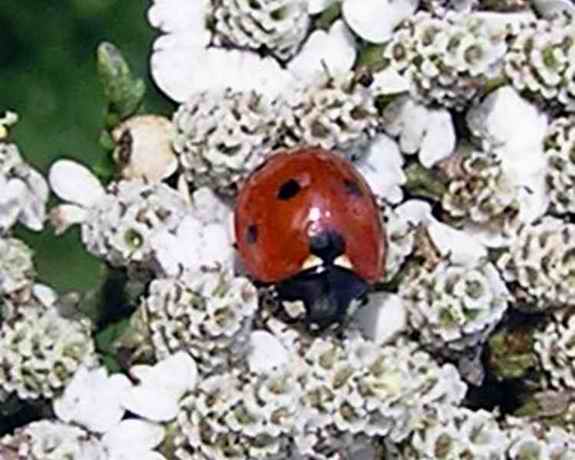|
Common Name: Ladybird Beetle, Ladybug, , Lady Beetle Scientific Name: Coccinellidae novemnotata (Latin for little sphere, nine-spotted)
Ladybugs are among the most well known and recognizable insects. Most are shiny red, orange, or yellow with dark spots. Commonly found on rock outcroppings in late fall.
Potpourri: Ladybugs are predators. They eat other insects, primarily aphids but also other plant pests such as scales and mites. The name derives from the Middle Ages, when these beetles were found to rid grapevines of harmful insect pests. In appreciation, they were dedicated to the Virgin Mary and originally called "beetle of our lady." The French call them les vaches de la Vierge, cows of the Virgin.
In late autumn, adult ladybugs congregate on rock outcroppings and on the sides of buildings in search of small crevices in which to spend the cold winter months.
The bright coloration is an indicator to potential predators that they are not palatable. In addition, the ladybug produces a foul smelling liquid from joints in the legs.
The rhyme "Ladybug, ladybug fly away home. Your house is on fire, your children do roam" refers to the burning of the hop vines in England after harvest, clearing the fields but killing the beetles. |
